Tahitian pearls are fashion forward, unconventional pearls that are taking the jewelry world by storm. They’re a modern twist on the classic white pearl, with their wide range of colors, shapes and overtones.
Here’s everything you need to know before you buy Tahitian pearls.
Why Choose Tahitian Pearls?

Source
Tahitian pearls are at the height of fashion and the question really should be – why not? Here are some reasons why we love them:
- Tahitian pearl colors match any skin tone and look great on almost all outfits. It’s a neutral color that goes with anything.
- They’re rare and valuable, making them an excellent investment.
- Tahitian pearls are perfect as heirlooms and can last for decades.
- You don’t need an entire strand of Tahitian pearls to look good. A single pearl in a beautiful setting looks amazing.
- They’re comparatively affordable.
- The overtones against the dark body color of the pearl are unique and unmatched.
- Tahitian pearls are exotic and luxurious.
- They’re a fashion forward pearl choice.
Are Tahitian Pearls Really Black?
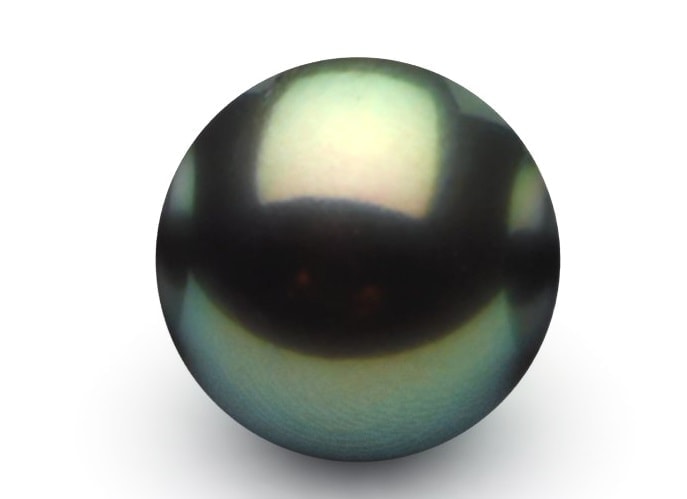
Tahitian pearls are often thought of as being black pearls, but they’re rarely if ever completely black. The colors range from steely silver, light creams and whites, to dark gray and charcoal. So, the idea that Tahitian pearls are pitch black is completely wrong.
However, they are the only naturally occurring dark pearls that you can find easily on the market. This is why they’re most famously known as being ‘black’ pearls.
Sea of Cortez pearls are also dark and are very similar to Tahitian pearls but are much rarer and very hard to find. Also, black freshwater or Akoya pearls are always dyed pearls as these don’t occur in dark colors in nature.
Do Tahitian Pearls Come from Tahiti?
Tahitian pearls aren’t grown in Tahiti but rather come from the islands of French Polynesia, of which Tahiti is the largest.
Most Tahitian pearl farms are located on one of five archipelagos in the area, called Tuamotu-Gambier Archipelago. These famous dark pearls happen to be French Polynesia’s most valuable and largest export, responsible for over 55% of the country’s total yearly exports.
How Are Tahitian Pearls Cultivated?
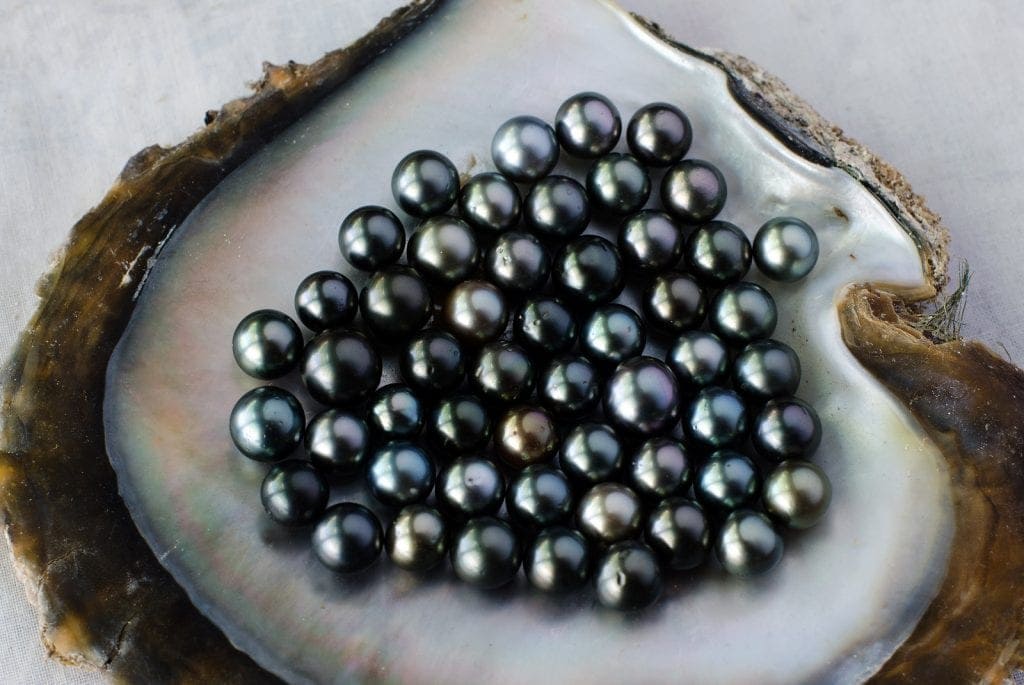
Tahitian pearls come from the Pinctada margaritifera oyster, which takes around 2 years to mature before the pearl production process can take place.
To stimulate the growth of a pearl, a bead nucleus is inserted into the gonad (reproductive organ) of the oyster. A piece of mantle tissue from another oyster is also inserted along with the nucleus to influence the color of the pearl and to help the oyster secrete nacre around the bead.
Once the pearl begins to form, it often takes up to 2 years before the pearl is ready to harvest.
Tahitian Pearl Characteristics – Color, Overtone, Size, Shape and Value
Tahitian pearls are among the most popular pearl varieties on the market today and offer a range of options to buyers.
Tahitian Pearl Color
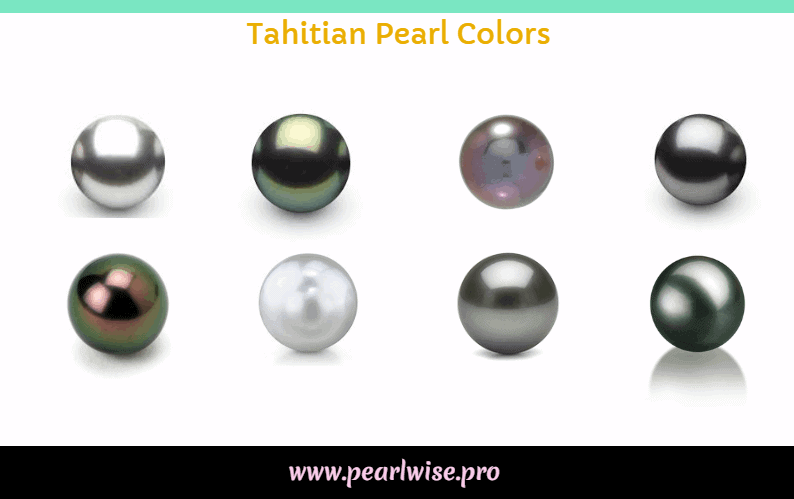
Some of the many Tahitian pearl colors available
We’ve already mentioned that Tahitian pearls occur in a variety of colors. Without doubt, the most popular Tahitian pearl body colors are the darker tones, especially the dark green pearl with the peacock overtone.
Tahitian Pearl Size
In the world of pearls, size matters. The larger the pearl, the more valuable, all else being equal. Tahitian pearls grow to large sizes, second only to the South Sea pearls, ranging from around 8.0mm to 18.0mm.
Tahitian Pearl Overtone
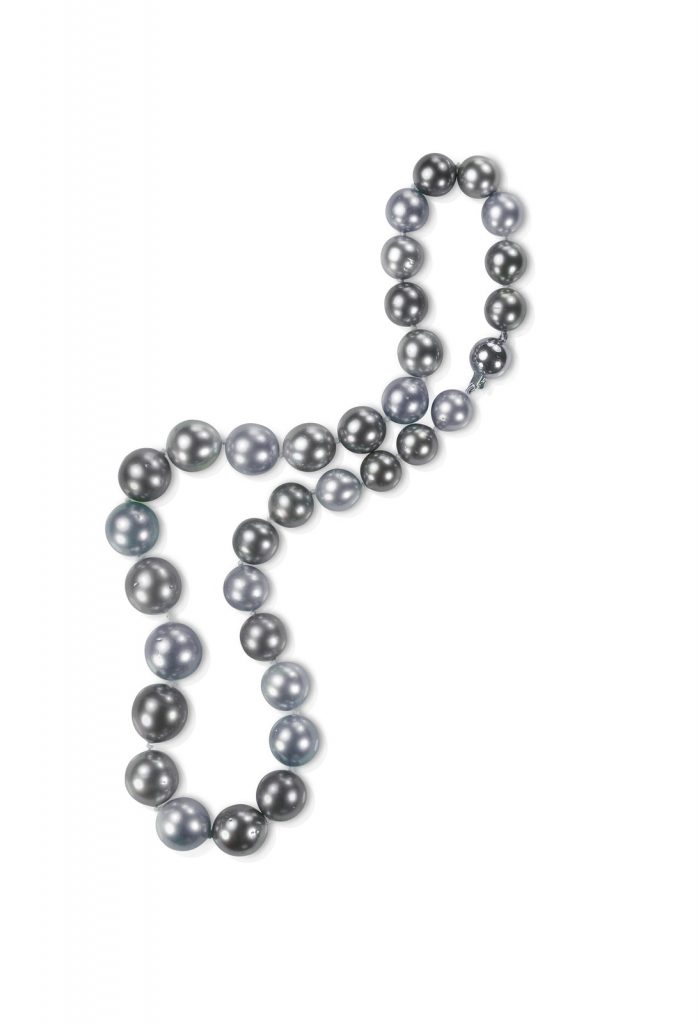
The overtones on Tahitian pearls are what really makes them stand out. Low-quality pearls will have little to no overtone and have a dull look.
However, the best Tahitian pearls show a rainbow array of overtone colors. Some of the most popular are peacock (also called oil slick), blue green, aubergine (purple), steely silver and green. The overtones serve to add a shimmering sheen of color to the pearl’s surface.
The reason Tahitian pearls get these colors is because the Pinctada margaritifera oyster has a mantle which showcases a range of rainbow colors.
Tahitian baroque and circle pearls are even more lustrous and colorful than their perfectly smooth spherical equivalents.
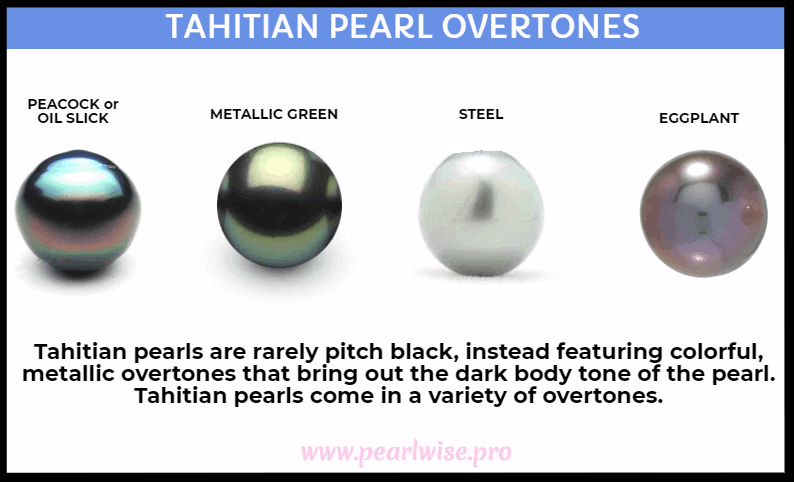
Tahitian Pearl Shape
Like all pearls, Tahitian pearls too come in a variety of shapes. We tend to think that the default shape for pearls is round but more than 90% of all harvested pearls are irregular in shape. These shapes include baroque, keshi and circle.
Irregular shaped Tahitian pearls are extremely lustrous, because of the extra angles that cause more intense light refraction. The uneven surface typically also creates more vibrant overtone colors.
Tahitian Pearl Value
On the spectrum of pearl price, Tahitian pearls sit closer to the higher-end. They’re much more valuable than freshwater and Akoya varieties but less expensive than South Sea or Sea of Cortez pearls.
There are many factors to take into account when determining the value of a pearl, but in general, a single high-quality 8.0mm pearl costs around $80 while a large 15.0mm one can fetch $1500.
Tahitian Pearl Jewelry
Tahitian pearls only became popular in the middle of the 20th century and took the fashion world by storm because of their unconventional look. Black pearls are perfect for non-traditional jewelry designs and a break from the norm.
They’re in direct contrast to traditional white pearls and their mysterious, intriguing look with slick overtones make them ideal for contemporary, avant garde jewelry styles.
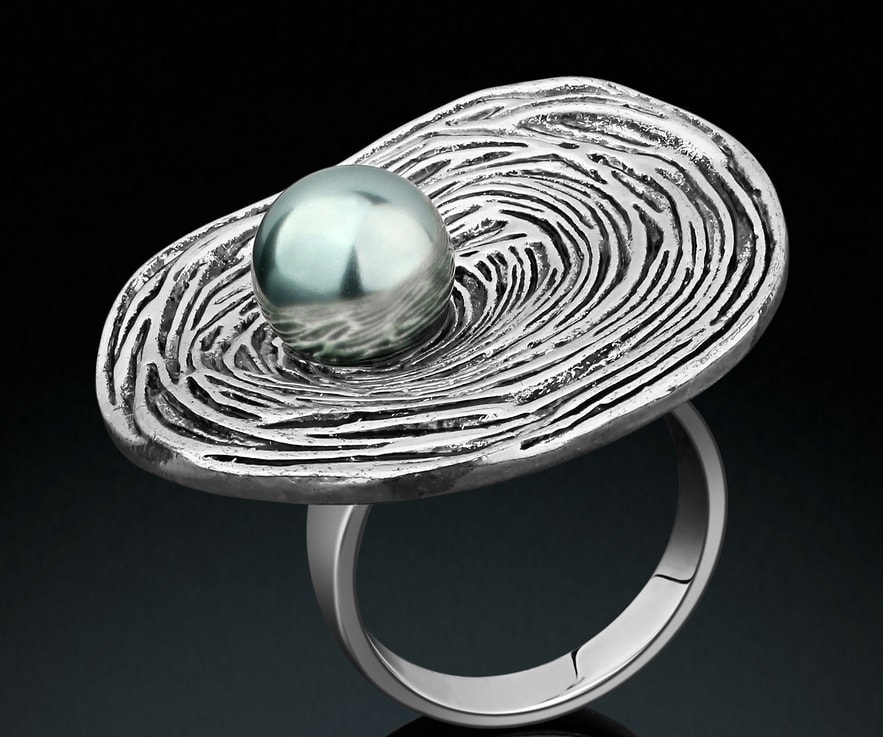
Because of their statement look, even a single Tahitian pearl can take the spotlight and still look amazing. Think Tahitian pearl pendants, studs, dangle earrings or rings.
A little goes a long way with these pearls so you can still keep it simple with just one or two pearls but still have a stunning piece of jewelry.
For a statement look, Tahitian pearl strands are eye-catching and bold. You can opt for a multicolor strand or identical pearls. Either way, the non-traditional look of the dark pearls is perfect for any occasion.

Tahitian pearls are best paired with silver-hued metals as these really bring out the color of the pearl, offering a complementary look.
When paired with yellow or rose gold, Tahitian pearls have a vintage, stylish vibe, and a much sharper contrast.

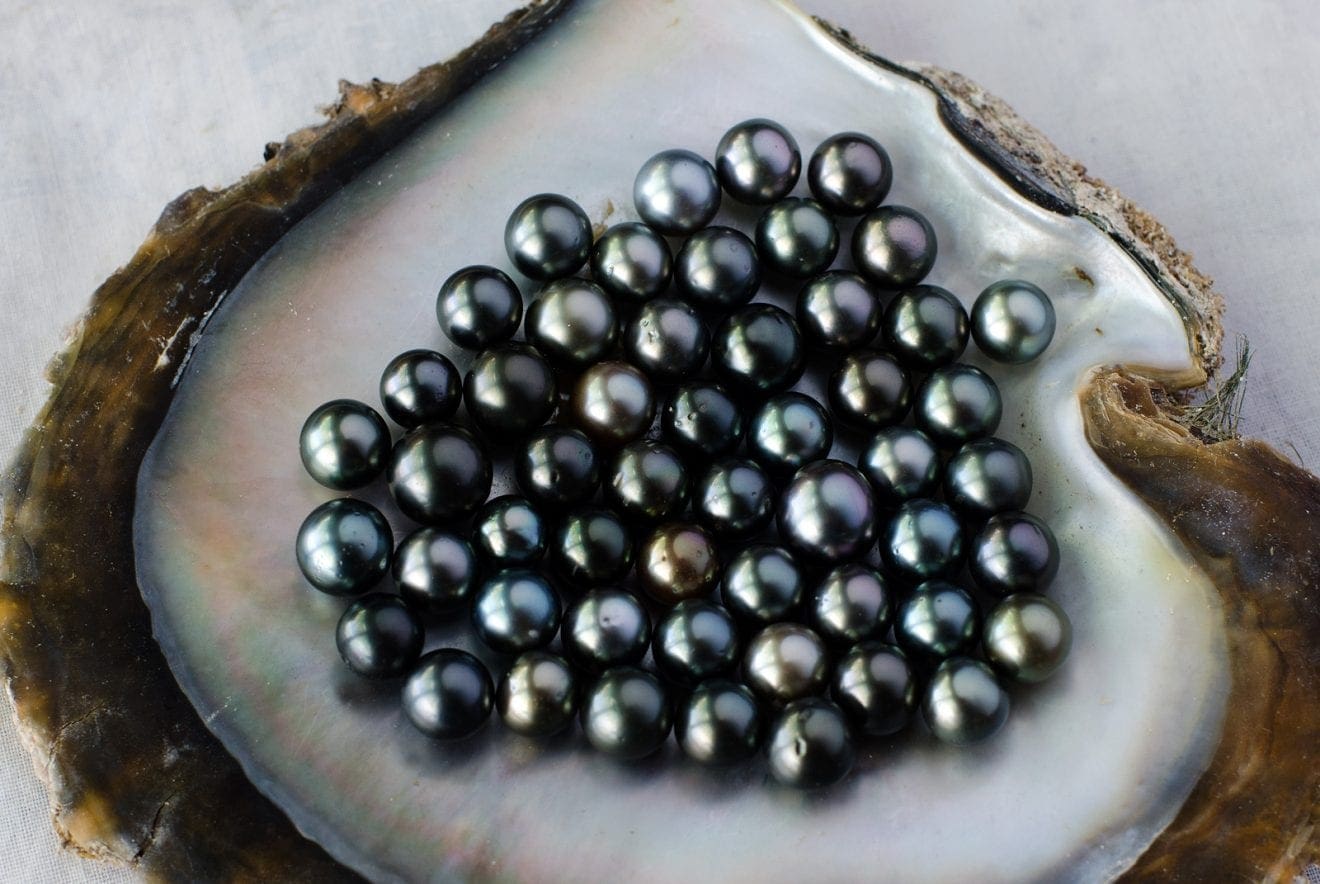

Add Comment